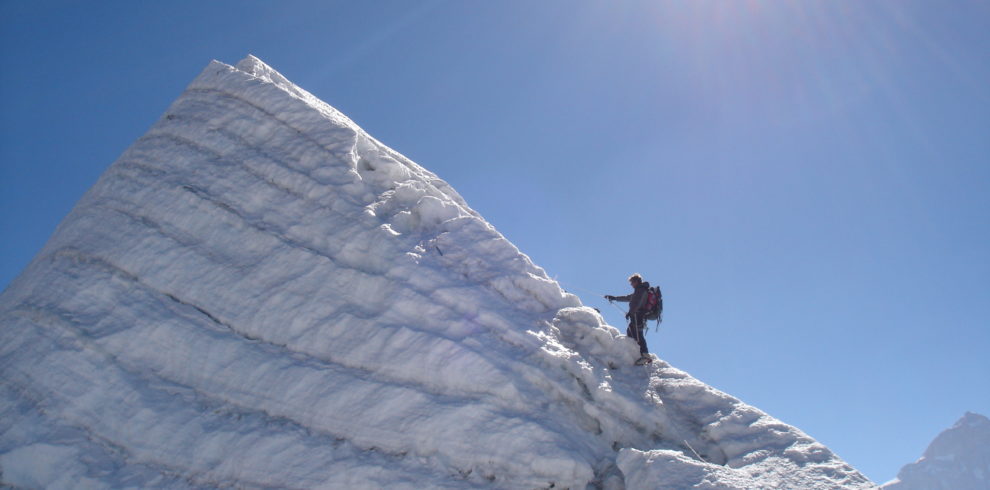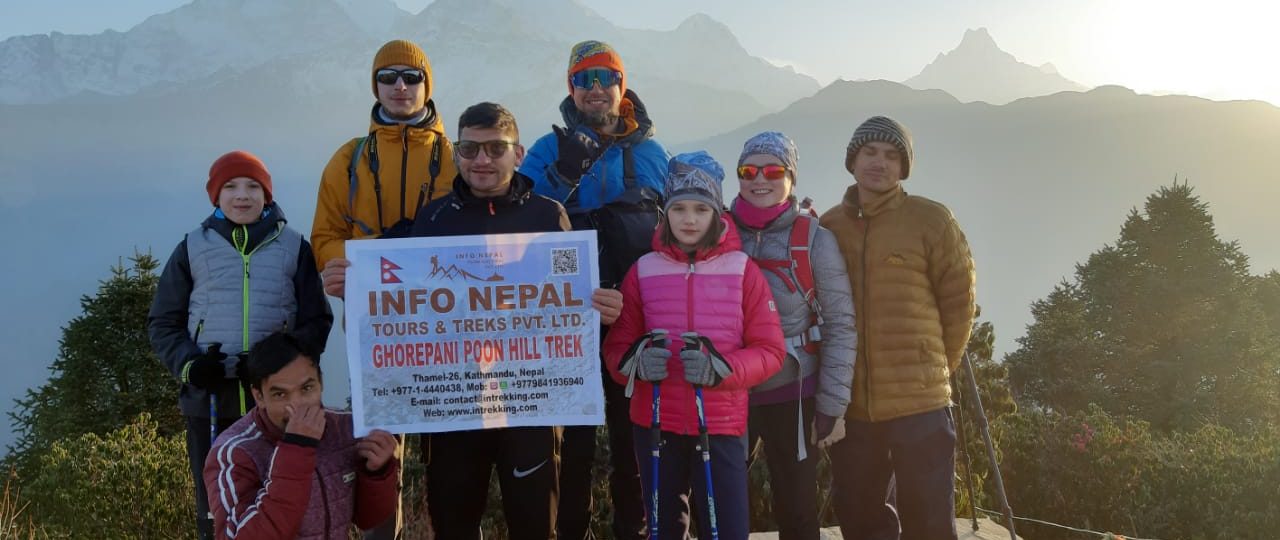
 Written By: Rajesh Neupane
Written By: Rajesh Neupane
Top Peak Climbing in Everest Region
Enquiry Form
The Everest region is a popular tourist destination due to the presence of Mount Everest. You do not have to climb Mount Everest to enjoy its wonderful scenery. To see it, trek around the Everest region.
Many hikers want to climb adjacent summits such as Island Peak, Mera Peak, and Lobuche Peak. Climbing these peaks, they may see Mount Everest and other summits such as Lhotse, Nuptse, and many more. Peak climbing in the Everest Region provides us with a breathtaking vista.
You can climb any of the peaks in the Everest region. The peak climbing expedition takes you on the most glamorous journey of your life. Peak climbing in this area helps to purify your soul and keep mental serenity.
Let us now discuss the region’s three most famous peak climbs: Island Peak Climbing, Mera Peak Climbing, and Lobuche Peak Climbing.
1. Island Peak Climbing
Island peak climbing is regarded as one of the best in the Everest region. It is a peak climb to Imja Tse at 6189 meters above sea level. The summit is located on an extension of Mount Lhotse’s ridge south of Lhotse Shar peak. The journey begins with a flight to Lukla.
The intriguing information about Island Peak is that members of the 1953 Everest expedition named it because it resembles an island from Dingboche.
Highlights of Island Peak Climbing
- Ascend to 6,189m and summit Island Peak for amazing views
- Perfect “introductory” Himalayan climb; challenging yet achievable
- Witness the incredible south face of Lhotse Peak up close
- Traverse varied and thrilling terrain – ice, rock, snow
- Climb steep headwalls and ridges
- Opportunity to utilize essential mountaineering skills
- Chance to stand atop the summit ridge and see magnificent Himalayan giants – Mt. Everest, Lhotse, Makalu
- Expert & experienced guides lead and assist throughout the journey
- Accomplish a major mountaineering milestone amid breathtaking scenery
2. Mera Peak Climbing
Mera Peak is the highest peak in the “trekking peaks” category. This peak region contains three separate summits: Mera North at 6476 m, Mera Central at 6461 m, and Mera South at 6065 m.
The quick information about this peak is that the route is different from other peak climbs. From the summit, you can see Mt. Everest, Cho Oyu, Lhotse, Kanchenjunga, and many more peaks.
Highlights of Mera Peak Climbing
- Summit Mera Peak (6,461m), a technically straightforward yet highly rewarding Himalayan climb
- Journey through remote, scenic valleys rarely visited by tourists
- Opportunity to see Mt. Everest along the trek before ascending Mera Peak
- Cross the exciting Zatrwa La pass (4,600m) while admiring views of Mt. Cho Oyu
- Spot unique flora and fauna like the elusive musk deer and Himalayan thar
- Stand atop the summit amidst unbelievable panoramas of peaks like Everest, Cho Oyu, Lhotse, and Makalu
- Learn essential mountaineering techniques for using ropes, ice axes, and crampons
- Expert sherpas guide climbers even at higher camps, promising safety and social support
3. Lobuche Peak Climbing
Lobuche Peak Climbing is quite close to the Khumbu Glacier and Everest Base Camp. There are two peaks: Lobuche East (6199 m), a trekking peak, and Lobuche West (6145 m), an expedition peak.
You may get a clear picture of Mount Everest from here because it is so close to Everest Base Camp. This peak climbing is an extension from Everest Base Camp. From the summit, you can see Mt. Everest, Ama Dablam, Lhotse, Nuptse, and many more mountains.
Highlights of Lobuche Peak Climbing
- Summit Lobuche East (6,119m), a popular trekking peak providing incredible views
- Short and scenic trek through the lively Khumbu region villages
- Cross glaciated terrain on the way to High Camp with views of Everest and Lhotse
- Opportunity to submit both Lobuche Peak and Kala Patthar on one journey
- Get sweeping views of giants like Everest, Lhotse, Nuptse, Pumori and Ama Dablam
- Chance to see the Khumbu Glacier, the world’s highest glacier
- Learn essential ice climbing skills and techniques
- Witness a magical sunset and sunrise from the peak with panoramas all around
Best Time for Peak Climbing in Everest Region
The best time for peak climbing in the Everest region is a relatively short window from mid-March to mid-May before the monsoon arrives. This period offers the most favorable conditions for summit attempts.
The spring features milder winds and drier weather, helping visibility dramatically, while ensuring more reliable climbing conditions on steep slopes and snow-covered paths to various high Himalayan peaks.
Temperatures remain cold at night, often below freezing even within the regular trekking altitudes, but daytime brings respite with warmer Himalayan sunlight along trails and mountaineering routes around Everest Base Camp.
From mid-May onwards, the monsoon arrives, increasing the threat of storms and avalanches until September, making the pre-monsoon period ideal for peak expeditions requiring technical climbing at altitude as climbers can move faster in good weather and climb with lower avalanche risk and fewer complications like high winds or heavier snow on trails.
Essential Guidelines for a Successful Peak Climbing
Here are essential guidelines for a successful peak climbing expedition in the Everest region:
- Prepare physically with endurance training hikes carrying weight to build strength and stamina over months pre-expedition
- Get proper alpine climbing gear and clothing for extreme cold, snow, ice axes, helmets, harnesses, crampons, etc.
- Trek slowly uphill upon arrival for best acclimatization to altitude and minimize altitude sickness
- Stay hydrated and balance sufficient calorie intake despite low appetite at altitude
- Follow the lead guide’s pace without rushing through stages of the journey
- Learn essential mountaineering techniques like traversing crevasses, using fixed ropes
- Rest properly with enough sleeping time for body to acclimatize between stages
- Pack medications for altitude sickness, diarrhea, nausea, headaches
- Bring snow goggles, glacier glasses, and moisturizers for sun protection
- Get insurance coverage with emergency evacuation services included
- Listen to the guides and climbing leaders for key decisions on the mountain
- Remain positive and determined through extreme fatigue and bad weather
Final Say
Scaling the epic pyramid peaks piercing the Himalayan skies will awaken your inner adventurer with immense personal fulfillment and views that look like paintings come to life.
While the physical intensity cannot be downplayed, the joy of standing atop an Island Peak or Lobuche after days of effort amidst Everest, Lhotse, and countless giants leaves all hardship faded. The fantastical sensation of climbing through early dawn light to glimpse the golden first rays illuminating the mountains as if spotlights from heaven cannot be replicated anywhere else.
Local sherpa guides crack jokes to lift the mood while mint tea breaks rejuvenate. The amusing yak trains, colorful fluttering flags marking passes, and spinning red Buddhist prayer wheels contrast the surrounding icy vastness, creating an utterly magical experience.
The spell of the high Himalayas is undeniable after you’ve glimpsed her peaks.